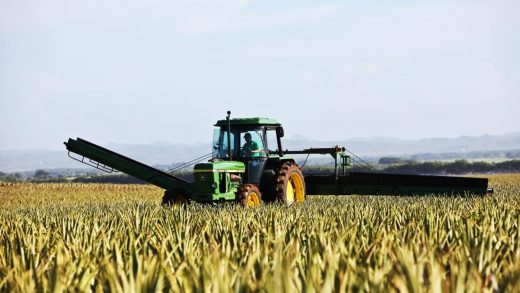Too many farmers can’t get broadband. That’s a crisis for us all
Despite all the challenges that farmers face today, I remain extremely optimistic about the future of agriculture. It will take more than the incredibly hard work of farmers, however, to continue to generate the food that our country and the rest of the world rely on. It will also require meeting the need for expanded access to rural broadband, which farmers need now more than ever.
Farmers manage a multitude of issues in any given year. Many of them, such as short planting times, weather disasters such as flooding, and commodity market changes are mostly out of their control. They are tasked with efficiently and sustainably growing food for 7.7 billion people around the world, with a projection to reach 9.7 billion by 2050, according to United Nations data—on a planet with a fixed amount of arable land and finite resources.
Resilience and farming go hand in hand. If anyone can achieve the impossible, a farmer can. The reason for my optimism is that farmers are continuing to push the envelope of technology and are becoming technology power users. As devoted stewards of their land and entrepreneurial problem-solvers, farmers have embraced cutting-edge technologies to operate smarter, more efficiently, and more precisely to obtain the greatest yield at the highest quality despite the high-stakes variables in their line of work. This broad array of technologies and solutions is often referred to as “precision agriculture.”
More technology, less uncertainty
Technology and innovation continue to be at the heart of how farmers overcome uncertainty and improve efficiency. Data connectivity is critical to enabling the extensive network of advanced technologies farmers use every day to accomplish their work and sustain their livelihoods. For example, taking a tractor or combine into the field utilizes self-driving technology while the machine tracks detailed information on the job being performed and adjusts settings remotely, all while synchronizing data through the cloud with a fleet of other smart machines. Meanwhile, telematics data is being used to proactively diagnose and alert farmers and their equipment dealers to issues before they even notice a problem with a machine.
Nearly 42 million Americans may lack broadband, including many U.S. farmers and ranchers.
This type of predictive maintenance means over-the-air software updates preempt any technical issues before they occur, minimizing downtime during critically important and time-sensitive farming operations. Data connectivity also supports more recent AI advances such as utilizing machine learning models and computer vision to plant, protect, and harvest crops, improving both accuracy and sustainability.
Farmers relentlessly pursue any methods at their disposal to farm more effectively and sustainably—and their use of technology in this pursuit is continuing to accelerate.
To take advantage of technology, farmers require broadband connectivity in the fields where they operate. However, rural farm communities continue to be underserved with access to broadband infrastructure. Approximately 19 million Americans—six percent of the population—lack access to fixed broadband service at the speeds necessary to take advantage of modern technology. The majority of these people live and work in rural areas, where nearly one-fourth of the population (about 14.5 million people) don’t have broadband access, according to a recent report from the FCC. Independent reports suggest the number could be more than twice as high, with nearly 42 million Americans lacking access, including many U.S. farmers and ranchers.
In order to feed the world now and in the future, we must act, and act urgently, to expand rural broadband infrastructure—including delivering wireless connectivity to farming operations – to take full advantage of future precision agriculture technologies. While farmers will always face uncertainty in their pursuit to feed the world, they need connectivity as a means to take full advantage of all that in-market innovation has to offer. They are relying on applications that communicate between their machines and the cloud, collecting data in real time to help them make fast, accurate, on-the-go adjustments to make sure they are operating in the most optimal and sustainable way given dynamic operating conditions.
It is widely reported that this uncertain time is straining our food supply chain. There are already disruptions to the meat supply that are persistent as a consequence of the pandemic. Dairy farmers are also being challenged, as 50 percent of demand from restaurants, school cafeterias, and other food services is cut off. Contending with these added pressures makes it even more important to look for solutions to make other aspects of a farmer’s job more seamless—and rural broadband is key to that.
Connectivity and technology’s role in sustaining our food supply isn’t confined to our increasing experience of ordering groceries online. It is essential to how food is grown by a farmer at the inception of the food supply chain. We must support farmers by ensuring they have connectivity to run their operations, regardless of the headwinds they face in a growing season, because ultimately, they’re supporting all of us.
Jahmy Hindman is the CTO of John Deere.
(21)



